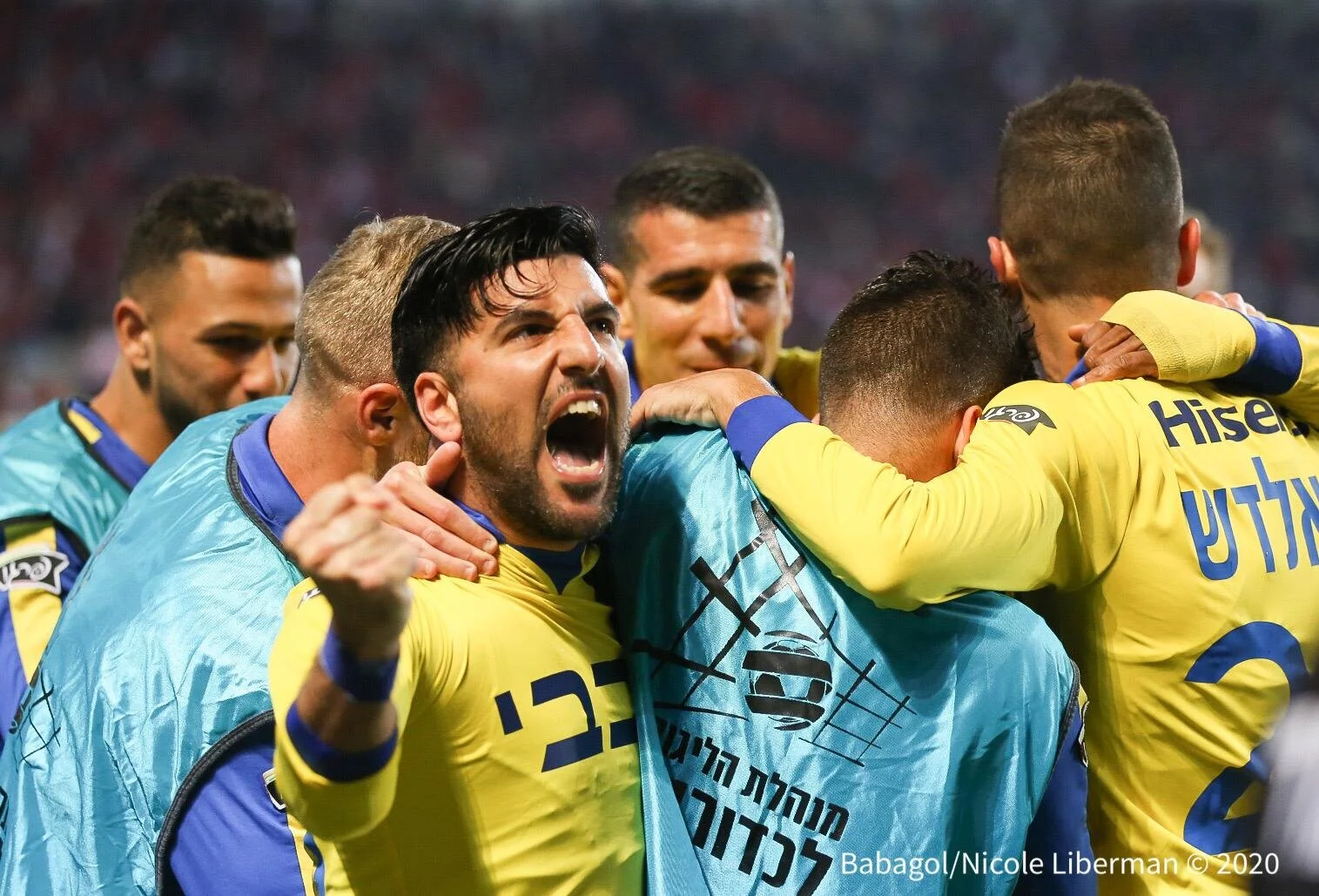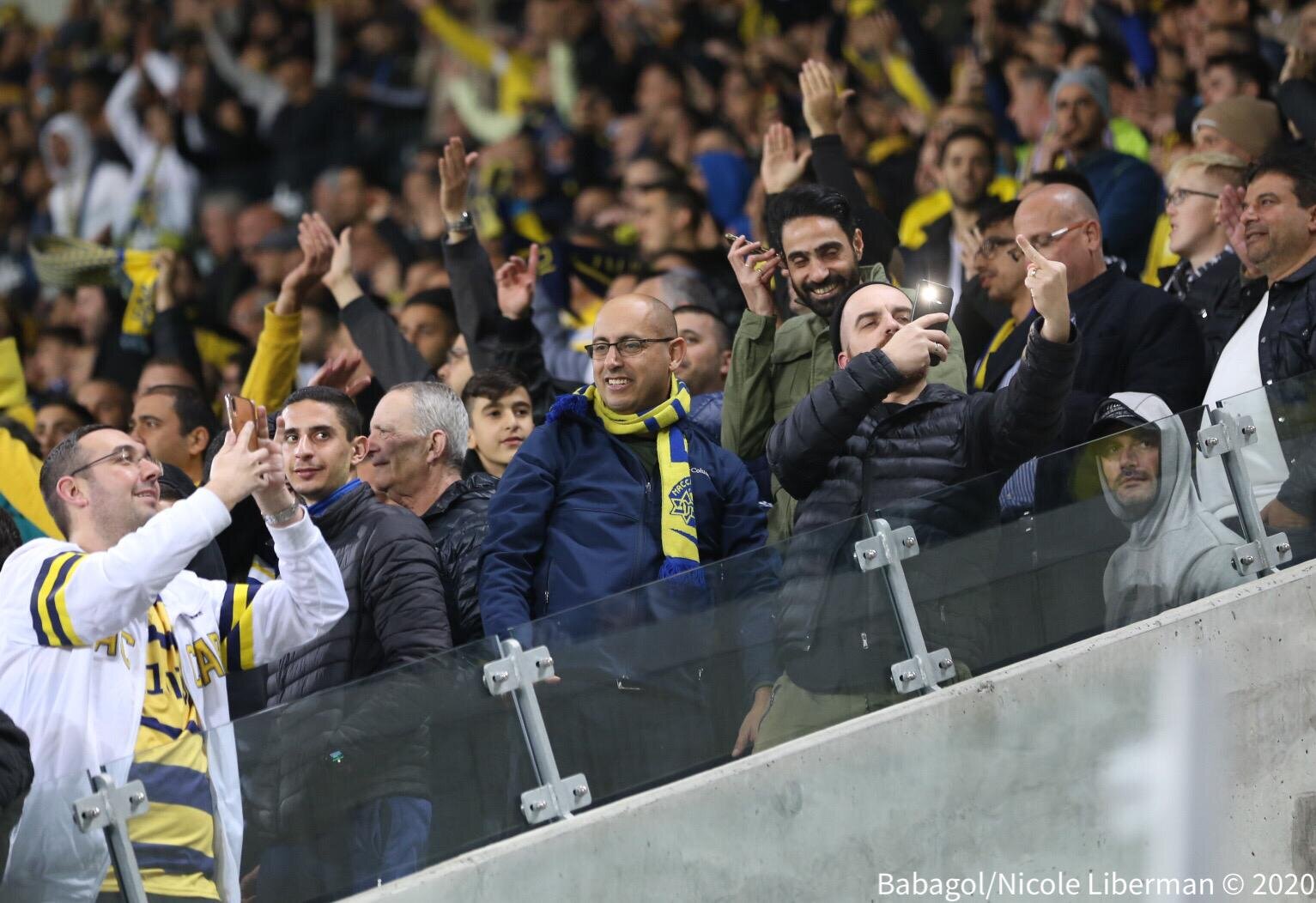Many people don’t see Israel or Tel Aviv as part of the middle east.
Still, concerning football, one may discover a whole world of identities, politics and passion. Especially when attending the big games, the local scene suddenly seems quite similar to what one can find in the stadiums of other countries in the region.
Photo: BabaGol/Nicole Liberman
This was precisely the case of the Tel Aviv derby on Monday evening at the partly renovated Bloomfield Stadium in Jaffa. 30 thousand people gathered and created an electrifying atmosphere, with Maccabi fans more dominant in the stands. This rivalry is rooted beyond the municipal boundaries of Tel Aviv, it’s very much a political one and dates back to the early days of the 20th century. Back then, the Jewish community was split between the communists and socialist (Hapoel) and the capitalist middle class (Maccabi). Like everything in Israeli football, it all started as a political dispute in British-ruled Palestine, but took various forms over the years. First, it was the socio-economic, political vision and identity that were in question; afterwards, the number of players each team sent to represent the national team, and so on.
Both clubs were crowned as AFC Champions League champions back in the seventies when Israeli teams still competed in Asia. While football fans of recent years might remember Hapoel Tel Aviv’s runs in the European competitions, the club is recently struggling, to say the least. Rolling debts, law suites from FIFA and changing owners who only used the club for publicity and money laundering are only a few of the reasons for the poor performance. Two years ago, the club played in the second division for the second time in its history.
On the other hand, Maccabi is concluding one of the best decades in the club’s history. With four championship titles, including one local treble and a Champions League group stage participation - it is merely the top that an Israeli club can ask for.
While Hapoel’s management does not really invest in the club, Maccabi enjoys the most significant budget an Israeli club has ever had. The squad market value, according to Transfemarkt, is €18.10m euros. Hapoel is far behind with €7.53m, and even that figure seems exaggerated.
The game itself accurately reflected these gaps between the two clubs.
Hapoel started the game well, playing hard defence and going out for counter-attacks when possible. Although they stood well in defence, it was clear that with the first mistake, an avalanche will roll down over their heads. And it did.
Jarafi, Hapoel Tel Aviv’s goalkeeper, is helpless in front of Maccabi’s attacking unit (Photo: BabaGol/Nicole Liberman)
On the 35th minute, Maccabi was first to score with a ‘flat’ but lethal free-kick by Omer Atzili. Despite the replay showing one of Maccabi’s players standing too close to Hapoel’s wall, the goal was allowed.
The goal heated things up, and two brawls broke before halftime - one of which following a harsh tackle by Hapoel’s Shay Ayzen that was sent off the pitch and left his friends in 10 men, one goal down just five minutes to the break.
The second half continued with a great goal on the 63rd minute by Eyal Golasa, one of Maccabi’s best players this season, who once signed with Lazio (although never played for).
Nigerian forward Chico Ofuedo added his own goal after an excellent assist by Enric Saborit just seven minutes after the 2-0. At this minute (’70), the whole stadium was moving by the singing of the yellow and blue fans.
Entered as a substitution for Itay Shechter, and scored. Chico Ofoedu (Photo: BabaGol/ Nicole Liberman)
Maccabi almost increased their lead, but the score remained as is.
For this game, Maccabi dressed in a limited edition retro kit in homage for the club’s legendary 1976/77 season. But the“retro” theme also prevailed beyond the players’ uniform. It was evident that the rivalry that once flourished between these two clubs was now obsolete and belongs in the history books. Who knows, one day it might make a comeback in a limited retro edition of its own.
Nothing is left from the political ideologies who separated the clubs a hundred years ago. Besides, it is virtually impossible to bridge the professional and financial gaps between the two sides.
But one thing is for sure - the intensity, the attendance, the symbolism and the atmosphere, are among the best things Israeli football can produce.
They have plenty of time for celebrating in their ‘stories’. Maccabi Tel Aviv fans (Photo: BabaGol/Nicole Liberman)
No matter what the gap between the two clubs is, there’s nothing like winning the derby (Photo: BabaGol/Nicole Liberman)
Relax, it’s not beer. Celebrations were up there in Bloomfield (Photo: BabaGol/Nicole Liberman)







